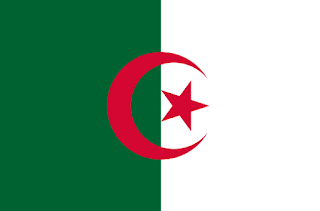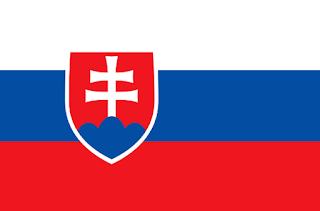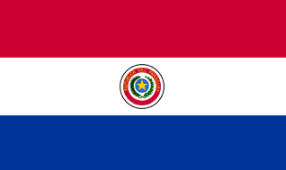FACTS ABOUT BENIN
AMAZING
FACTS ABOUT BENIN
1.
The official name of Benin is the “Republic
of Benin”.
2.
Port Novo is the capital city of Benin.
3.
The total population of Benin is 11,038,805.
4.
The natives of Benin are called
Beninese.
5.
The West African CFA franc (XOF) is the official
currency of Benin.
6.
Benin shares a border with Togo, Burkina
Faso, Niger and Nigeria.
7.
Benin is named after the body of water
on which it lies – the ‘Bight of Benin’.
8.
Benin became independent from France on
August 1, 1960.
9.
The capital region of the country and
the area nearby was referred as ‘Slave Coast’ from as early as the 17th
century. During the trans-Atlantic slave trade, a large number of slaves were
shipped to the New World.
10.
By about 1750, the Kingdom of Dahomey (a
part of Benin) was earning an estimated £250,000 per year by selling Africans
to the European slave-traders.
11.
The last ship of slaves departed from
Dahomey for Brazil in 1885.
12.
The region was a French colony for 58
years between 1900 and 1958.
13.
Benin was the first country in the 1990s
to make the transition from a dictatorship to a multiparty democracy.
14.
The capital of Benin—Porto Novo—was
developed as a port for the slave trade.
15.
The country was named Benin on November
30, 1975. Earlier it was known as Dahomey.
16.
Indigenous languages such as Fon and
Yoruba are commonly spoken in Benin.
17.
The country measures about 325 km (202
mi) at its widest point.
18.
While cotton is the country’s main
export item, the economy of the country is also dependent on agriculture and
regional trade.
19.
The country’s only seaport and
international airport are in Cotonou, which is also the largest city in the
country.
20.
Soccer is the national sport of Benin.
21.
The high prices of legal petrol forces
the locals to buy it illegally for cheap. Petrol is illegally sourced from
Nigeria and is sold in the country. Petrol stations are scarce in the country.
22.
In terms of area, Benin is slightly
smaller than Pennsylvania. Or it is above two third the Size of Portugal.
23.
The country has a 121 km long coastline.
24.
31.3% of the country’s land area is
under agriculture while 40% of it is under forest.
25.
The median age of the people in Benin is
17.9 years.
26.
Benin has a high fertility rate with
approximately 5 children per woman.
27.
Benin has a literacy rate of 38.4%.
28.
Almost 4.5% of the country’s population
uses the internet.
29.
Crime rate is low in the country.
However, theft is a problem and many wealthier homeowners generally hire a
night watchman.
30.
The red color on its flag symbolizes
courage, yellow stands for wealth and green symbolizes hope and revival.
31.
The southern part of the country
receives heavy rainfall and produces more vegetation as compared to the other
parts of the country.
32.
Hubert Maga was elected as the first
president of Benin.
33.
Benin is also home to Fulani herders who
move their livestock over long distances in search of grass. These herders are
locally known as the Peul.
34.
There is at least one open-air market in
every town of the country.
35.
People generally eat rice, vegetables,
and meat. Food is prepared at least twice a day. A variety of fish is eaten in
the south while beef is more popular in the north.
36.
In the country’s culture, it is
considered bad to eat with the left hand or offer another person something with
it.
37.
Upon entering or leaving an appointment,
it is appropriate to shake the hand of each person present.
38.
Young Beninese likes to eat packaged
food items that are mostly imported. They perceive their traditional diet as
monotonous and like to eat imported food, instead.
39.
AIDS is a major concern in the country
and it is straining the health care system.
40.
With over twelve thousand students
enrolled, the University of Benin in Cotonou is the only postsecondary
institution in the country.
41.
Because of the extreme heat during the
summers in the country, the people wear jackets even when the temperature in
near 20 degrees on plus.
42.
White persons visiting the country are
referred to as “yovo”. Do not be surprised to find people and kids shouting
this word behind you if you happen to visit the country. The people, however,
are very friendly and lively.
43.
The capital of Benin, Porto-Novo is also
known as Adjatche and Hogbonou.
44.
People of the country do not like to be
photographed. They believe that a photograph can be used to cast a sell or a
course.
45.
The country is famous the world over for
carved wood masks.
46.
Though Benin has a long history with
slavery, slaves in the region were treated very well.
47.
While being very poor, Benin is also one
of the most politically stable countries in the West Africa.
48.
Benin Exports:
cotton, cashews, shea butter, textiles, palm products and seafood.
49.
Benin Imports:
foodstuffs, capital goods and petroleum products.
50.
The internet country code for Benin is .bj.




Comments
Post a Comment